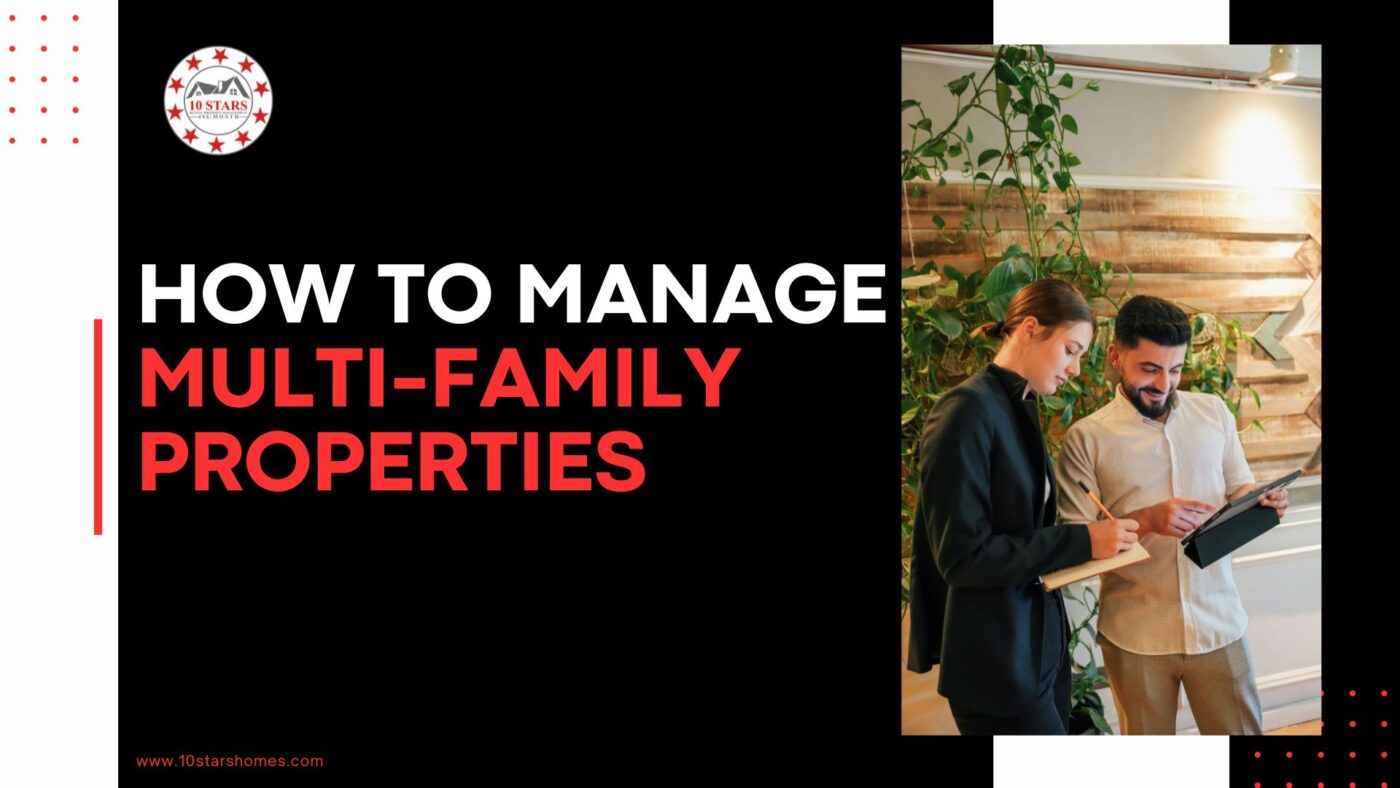How to Successfully Manage Multi-Family Properties: A Comprehensive Guide
Managing multi-family properties can be a lucrative and rewarding venture, but it also comes with its fair share of challenges. From dealing with multiple tenants to maintaining the property’s upkeep, effective management requires careful planning, organization, and a proactive approach. In this blog post, we will provide a comprehensive guide on how to manage multi-family properties, covering everything from tenant selection and communication to property maintenance and financial management. Let’s dive in!
Setting the Foundation:
a. Legal and Regulatory Compliance: ecome knowledgeable with neighborhood multi-family property rules, ordinances, and permits. To avoid legal issues, make sure you have the required licenses and abide by fair housing regulations.
b. Property Evaluation: Conduct a thorough assessment of the property’s condition, identifying any necessary repairs or upgrades. Develop a maintenance plan to address potential issues promptly.
Effective Tenant Selection:
a. Tenant Screening: Implement a robust screening process to evaluate prospective tenants thoroughly. This may include background checks, credit checks, income verification, and rental history analysis.
b. Lease Agreements: Develop comprehensive lease agreements that clearly outline tenant responsibilities, rent payment terms, maintenance procedures, and other essential details. Ensure all tenants understand and sign the agreement before moving in.
Streamlining Communication:
a. Tenant Communication: Establish effective channels of communication with tenants, such as email, phone, or a tenant portal. Respond promptly to inquiries, concerns, and maintenance requests.
b. Community Building: Encourage a sense of community among tenants by organizing social events, creating online forums, or establishing shared amenities. A harmonious community improves tenant satisfaction and reduces turnover.
Financial Management:
a. Rent Collection: Implement a reliable rent collection system, such as online payments or automated recurring billing. Clearly communicate rent due dates and enforce late payment policies consistently.
b. Budgeting: Develop a comprehensive budget that covers operating expenses, maintenance costs, property taxes, insurance, and vacancy allowance. Regularly review and adjust the budget to ensure financial stability.
Maintenance and Repairs:
a. Regular Inspections: Conduct routine inspections to identify maintenance issues before they escalate. Create a checklist to ensure all areas of the property are assessed thoroughly.
b. Prompt Response: Address maintenance requests promptly to minimize tenant dissatisfaction. Establish relationships with reliable contractors or consider an in-house maintenance team to expedite repairs.
Property Security:
a. Security Measures: Install robust security systems, including surveillance cameras, access control systems, and well-lit common areas. Implement policies to enhance tenant safety, such as visitor registration and emergency protocols.
b. Tenant Education: Educate tenants on basic safety practices, such as locking doors and reporting suspicious activities. Distribute informational materials and conduct regular safety awareness campaigns.
Legal and Risk Management:
a. Insurance Coverage: Obtain sufficient insurance protection for the property, including any necessary liability and property insurance as well as flood insurance.
b. Emergency Preparedness: Develop a comprehensive emergency response plan, including evacuation procedures and contact information for emergency services. Regularly update and communicate the plan to all tenants.
Eviction and Conflict Resolution:
a. Eviction Process: Familiarize yourself with local eviction laws and follow the legal procedure when necessary. Document all instances of lease violations and provide tenants with clear warnings and opportunities for rectification.
b. Conflict Resolution: Develop effective conflict resolution strategies to address tenant disputes. Encourage open communication and mediate conflicts whenever possible to maintain a harmonious living environment.
Conclusion:
Successfully managing multi-family properties requires a multifaceted approach that encompasses tenant selection, effective communication, financial management, property maintenance, and legal compliance. You can overcome obstacles and make the most of your multi-family property investment by putting the techniques described in this article into practice. To succeed in this market over the long term, keep in mind that proactive management, excellent communication, and a focus on tenant happiness are essential.

